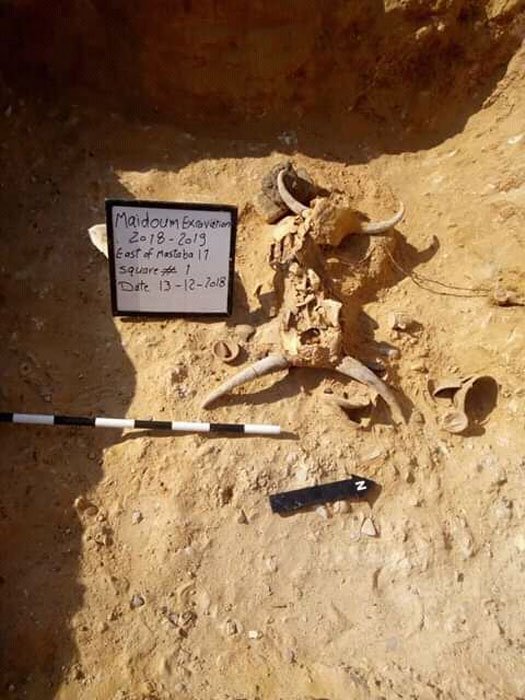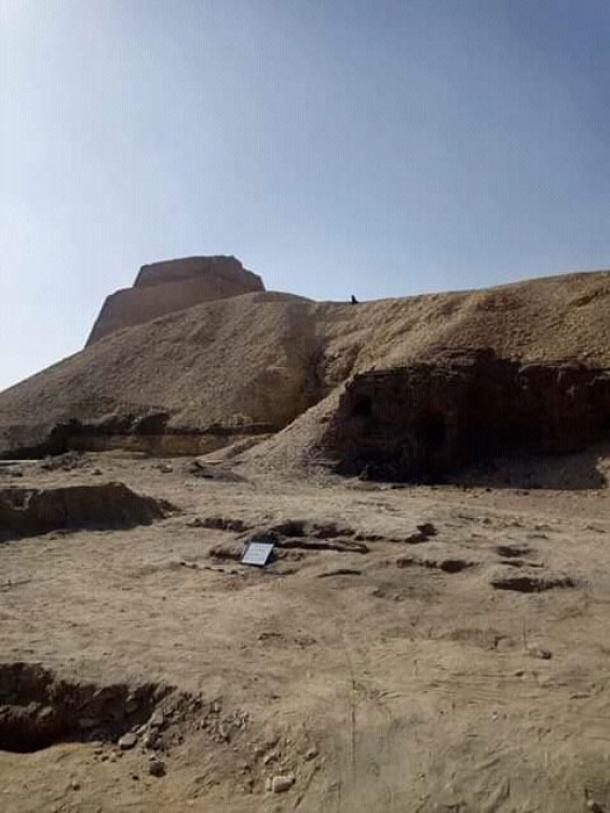Teenage girl’s skeleton discovered in a mysterious grave near Egyptian pyramid
The skeletal remains, hugging in the crypt, of a 13-year-old girl, have been discovered by Egyptian archeologists excavating the pyramid ruins 60 miles out of Cairo.
It is a mystery how or when she died, though the experts say the site itself dates back to the end of the Third Dynasty roughly 4,600 years ago.
The cemetery was empty apart from the skeleton, which was buried in the squatting position, but the team also found two animal skulls and three ceramic vessels nearby that were likely placed as funerary offerings. The skull offerings appear to have come from bulls, according to Egypt’s Ministry of Antiquities.
Researchers came across the burial during work on the partially-collapsed Meidum pyramid, where the team is excavating a cemetery built near the end of the Third Dynasty.
It’s thought that construction on the Meidum period began at the command of the Third Dynasty’s last pharaoh, Huni, and was continued by Sneferu, the first pharaoh of the Fourth Dynasty. Previous efforts at the site uncovered the tomb of Prince Nefar-Maat, Sneferu’s oldest son.
While the newly-discovered bones indicate the remains belong to a girl who was around 13 years old when she died, much about the burial and the offerings are still unclear.
Researchers do not know the identity of the buried teenager.
The latest burial was found surrounded by a partially intact brick wall, and the team is now working to restore and reinforce the structures.
Elsewhere, in the Sinai Peninsula, the Antiquities Ministry says it discovered an ancient workshop that was used to build and repair ships thousands of years ago.
The site dates back to the Ptolemaic era (332 B.C.-30 B.C) and was found during excavations in the Tel Abu Saifi archaeological site, which is said to have once been the location of the Roman fortress Silla.
The find includes two dry dockyards where the ancient ships were worked on.
Researchers say it dates to the Greco-Roman period in Egypt, which lasted from the arrival of Alexander the Great in the 4th century until the 7th century when the Islamic conquest swept the region.









